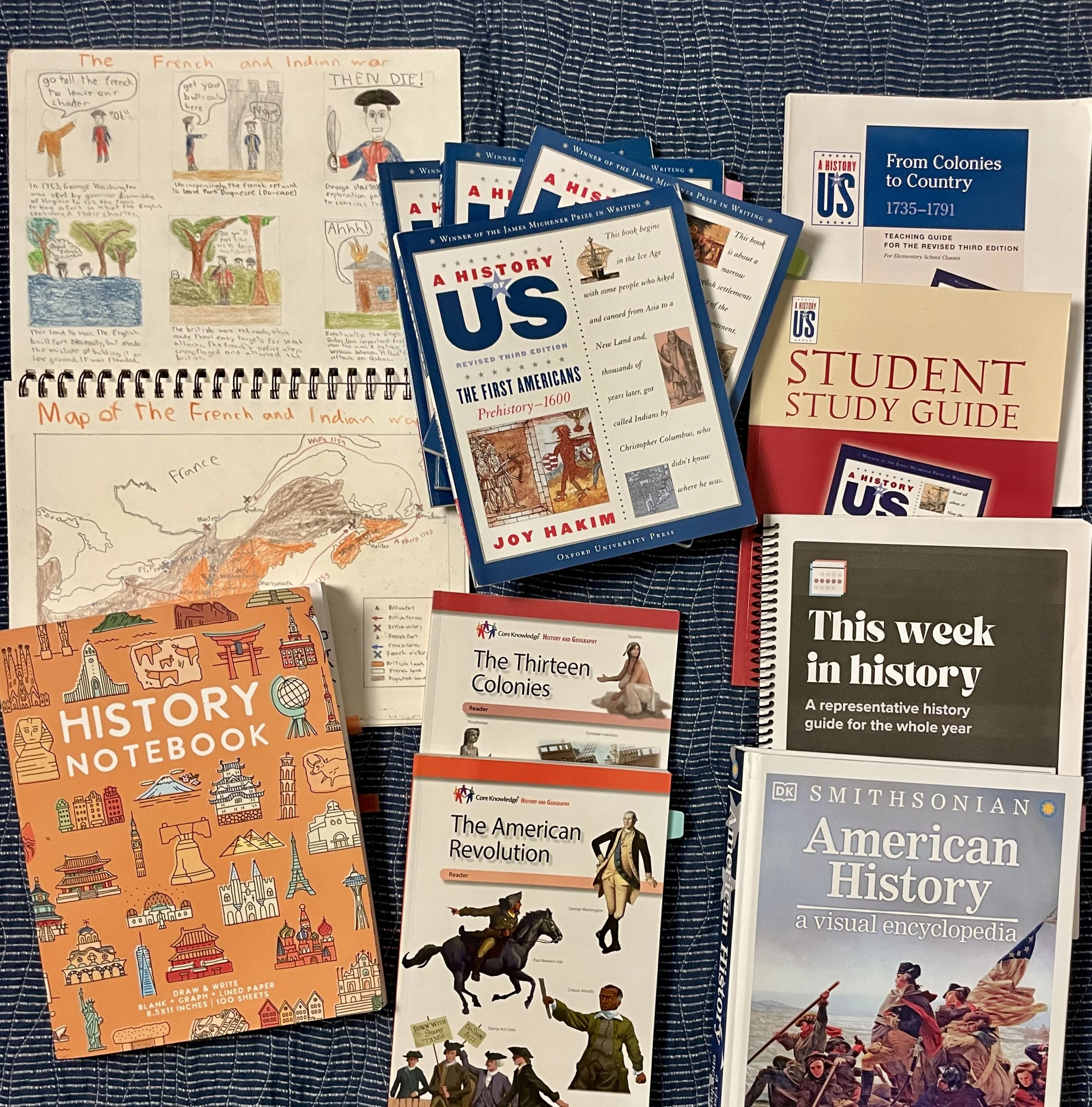Elementary American History
Diving into American History: Our Homeschool Approach
This year, my 10-year-old (4th grade) and I are tackling American History, Part 1. The plan? Cover Native Americans up to the Civil War this year and then pick up next year with Part 2, starting at the Civil War and working our way to modern times.
When I started planning our year, I pulled multiple spines, trying to figure out the best fit. But after a few weeks, I quickly realized that juggling two main resources wasn’t working. (Pro tip: Don’t try to use two spines at once—it’s just too much.)
If you’re new to homeschool lingo, a “spine” is the central resource that guides your studies. Most of the time, it’s your curriculum, but if you’re doing unit studies or a more relaxed approach, it’s helpful to have one go-to resource to provide structure and pacing.
What We’re Using
After some trial and error, I landed on The History of US series by Joy Hakim as our main spine. It’s engaging, thorough, and has great teacher and student guides that help keep us on track. Added bonus — there are audiobook versions of each volume, too! But I also pull from a variety of other resources to round things out:
Our Main Resources:
Check out the Instagram Reel here.
The History of US book series (spine) + teacher and student guides
Notebooking – We use a Schoolnest history notebook, a timeline notebook, and our learning journals. (If you’re curious about notebooking, check out my Notebooking Guide for more details and this in-depth YouTube video!)
Core Knowledge readers – These are solid, content-rich resources that align well with what we’re covering (you can print these for free from Core Knowledge or buy the paperback books here).
DK Smithsonian American History – Because who doesn’t love a good DK book? Check it out here.
This Week in History by Stories of Color – While this isn’t strictly American history, a lot of the events overlap, and I love adding in diverse perspectives. Check it out here.
What We Tried and Dropped:
Students of History Unit Studies – I originally planned to use this alongside History of US, but it was too much to juggle. That said, it’s a great stand-alone option if you’re looking for a ready-to-go option. Check it out here.
What a Typical Week Looks Like
Aim to complete one "part" from the History of US teacher guide per week, usually translating to a chapter or so a day.
Read the chapter together, or if needed, my son reads it independently or listens to the audiobook version.
Discuss the chapter after reading.
Assign the relevant History of US student guide page, which includes:
Vocabulary work
Graphic organizers
Examining primary sources
Short-answer writing
Assign additional reading from:
Core Knowledge readers
American History book
Library books related to the topic
Assign relevant YouTube videos for additional context
Most weeks, he summarizes his learning in his learning journal (our "fancy" notebooks). This usually includes:
Writing about key concepts
Drawing illustrations to reinforce learning
Final Thoughts
History is one of those subjects where it’s easy to overcomplicate things, but I’ve found that keeping it simple and having one strong spine makes all the difference. If you’re in the middle of figuring out your history plans, my biggest advice? Pick one main resource, supplement lightly, and don’t be afraid to adjust as you go!
I’ll be sharing more about how we use these resources, what our weeks look like, and tips for making history work in a homeschool setting. Check out my 4th grade and History highlights on Instagram for more behind-the-scenes!



